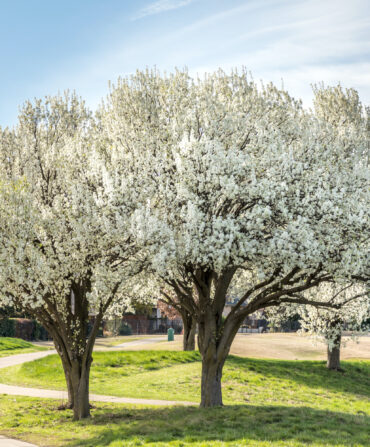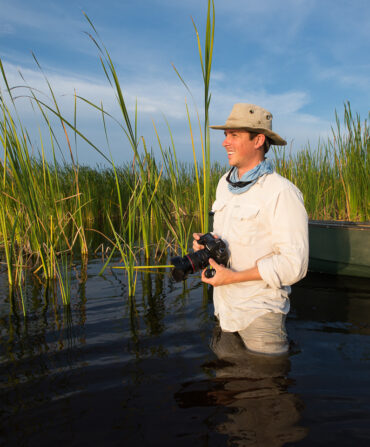Thomas Wolfe, as was his wont, put it best. Toward the end of the posthumously published novel You Can’t Go Home Again, the North Carolina–born novelist’s protagonist muses on memory and history. “I lived again through all times and weathers I had known—through the fag-ends of wintry desolation in the month of March and the cold, bleak miseries of ragged red at sunset, the magic of young green in April…and October with the smell of fallen leaves and wood smoke in the air,” Wolfe wrote. “The forgotten moments and unnumbered hours came back to me with all the enormous cargo of my memory, together with lost voices in the mountains long ago, the voices of the kinsmen dead and never seen, and the houses they had built and died in, and the rutted roads they trod upon…. So did the plant go back, stem by stem, root by root, and filament by filament, until it was complete and whole, compacted of the very earth that had produced it, and of which it was itself the last and living part.”

The last and living part: Is there anything more Southern, really, than an abiding attention to the last and the living? For we always, one way or another, in fact or in imagination, come back. No matter how far afield time and chance take us, the South exerts an undeniable pull, as real and as inescapable as gravity itself. We don’t need to worry about whether we will return, but to what we’ll be able to return.
We understand in our bones that William Faulkner was right about the past never being past, much less dead. Half a millennium after the Spanish reached Florida, four hundred years after the Dutch man-of-war brought the first slaves to Jamestown, a century and a half after Appomattox, and fifty-odd years after Selma, the South remains distinctive in a steadily homogenizing world. With Tennyson’s Ulysses, we’re a part of all that we have met—for good and for ill—and what we’ve met in the American South must never be forgotten.
Remembrance is among the most fundamental of human characteristics. At our best, we look back not to revere a mythic past—that’s nostalgia, not history—but to seek inspiration, to acknowledge our failures, to honor our victories, to redeem our sins. It is an ancient enterprise. “Remember the days of old,” Moses says at the end of his life. “Consider the years of many generations.” Without sufficient memory we are lost; with too much we are captive. A people governed by reason and grace and not by passion or tribalism can engage the past in enlightened terms.
There are few more important tasks. In one sense, history is an unending conversation between the past and the present that can shape the future. And by future, I mean not just a distant one, but the more immediate future we can somewhat control, or at least try to—the future that we think of when we plant a tree, or write a book, or have a child. “History, as nearly no one seems to know, is not merely something to be read,” James Baldwin wrote. “And it does not refer merely, or even principally, to the past. On the contrary, the great force of history comes from the fact that we carry it within us, are unconsciously controlled by it in many ways, and history is literally present in all that we do.” Baldwin, of Harlem and of France, was speaking a truth that resonates with Southerners.
Which brings us to this issue of Garden & Gun. The subject is saving the South—how people are struggling to preserve wildlife and precious ecosystems, to keep folkways alive, to confront the roots and realities of slavery. Of course, the phrase itself—the South—contains multitudes, for there is never only one South. There are as many Souths as there are Southerners—Southern hope and Southern fear and Southern joy and Southern sadness and Southern triumph and Southern tragedy.
We think of it as a region, but really it’s a realm, a sovereign entity beyond geography and beyond time: It defies easy categorization. What can be defined, though, are those things that we who have lived here and breathed here believe worth rescuing from time’s ever-rolling stream. From moonshine jugs to longleaf pines, from fading accents to the Black Cowboy Museum, the ensuing stories paint a portrait of a world at risk of being lost—and a world we should seek to preserve.
Don’t cue “Dixie” here or think a Scarlett O’Hara quotation is in the offing. I’m not a Southern sentimentalist. Far from it. I love my native region in spite of, not because of, its deep historic flaws. I grew up on Missionary Ridge, the Civil War battlefield overlooking Chattanooga. I played among monuments (Union, as it happens) on the land once home to the headquarters of Braxton Bragg, the Confederate commander; a few miles away stood the house of Chief John Ross of the Cherokee Nation. There, then, were two vivid manifestations of the twin original sins of America: African American slavery and the forced removal of indigenous peoples.
And yet, and yet—so much of history turns on the phrase and yet. Flannery O’Connor once remarked that Southerners have “enough sense not to ask for the ideal but only for the possible.” This is also a national habit of heart and mind, for we seek, in the words of the preamble of the Constitution, not a perfect union but a more perfect one. James Madison of Orange County, Virginia, knew what he was talking about when he played a pivotal role in creating a government founded on the insight Miss O’Connor of Milledgeville, Georgia, would echo nearly two centuries later: that in a fallen world riven by appetite and ambition, we can’t count on reaching the Promised Land. We can, however, press ahead through the wilderness, living in hope. The Guthrie, Kentucky–born Robert Penn Warren understood this, writing, “We all live with a thousand unsolved problems of justice all the time…. All we can do for posterity is to try to plug along in a way to make them think we—the old folks—did the best we could for justice, as we could understand it.”
As we begin the third decade of the twenty-first century, we face unimaginable challenges of stewardship. From climate to democracy, from civility to equality, the infrastructure of our lives is wearing thin; certainty about the future is as difficult to glimpse sometimes as a firefly in the very first whispers of twilight. This issue calls us to cherish what is right before us and to secure its fate as best we can for as long as we can. It’s a noble, achievable mission—and too few things in life are both noble and doable.
In a letter to a professor of English at the University of the South in Sewanee, Tennessee, nearly half a century ago, Robert Penn Warren observed that poetry was a “redemption from the accident, error, and evil of life—and of our lives.” Restoration and preservation are a kind of poetry, a summoning of universal spirit to be deployed in a particular cause, be it in the service of a species of fish, a kind of biscuit, or a way of thinking about the world.
And so everything comes down to the South as one imagines it to be, to the South as it is, and to the South it will become. To keep the best and do battle with the worst, to spread light and to combat the darkness, to serve the cause of what Lincoln called “the better angels of our nature,” to discern what to save and what to let fall away—these are our marching orders in the good fight to create a more perfect South.
In You Can’t Go Home Again, Wolfe’s protagonist returns to North Carolina for the funeral of his aunt Maw. A family friend, Mrs. Flood, takes him aside and says, “Young man…I’ve been a long time livin’ on this earth, and as the fellow says, the world do move! You’ve got your life ahead of you, and lots to learn and many things to do—but let me tell you somethin’, boy!… Go out and see the world and get your fill of wanderin’…and then come back and tell me if you’ve found a better place than home!… Your Aunt Maw always hoped you’d come home again. And you will!” And so will we all. The question now is what that home will be.








